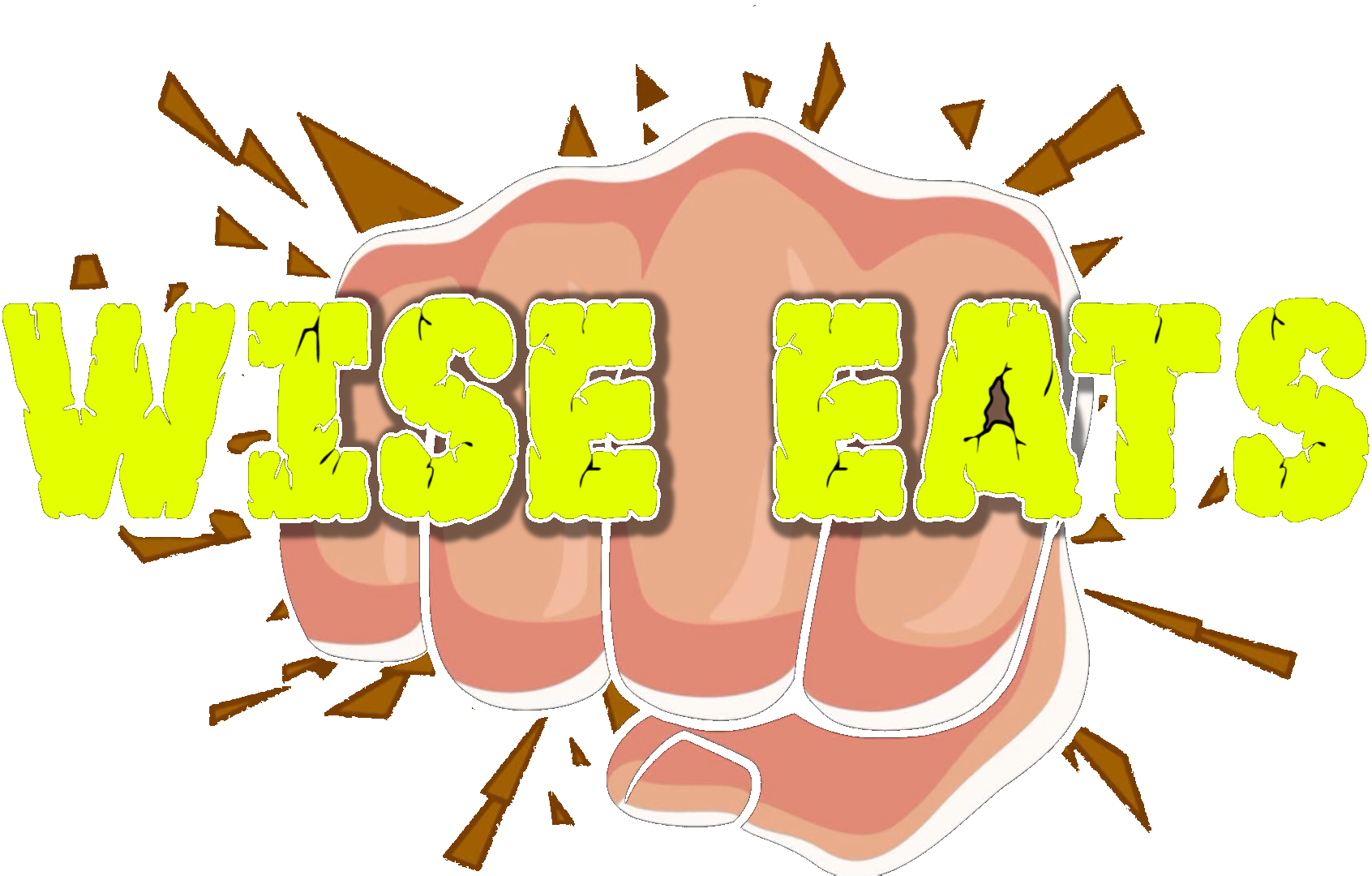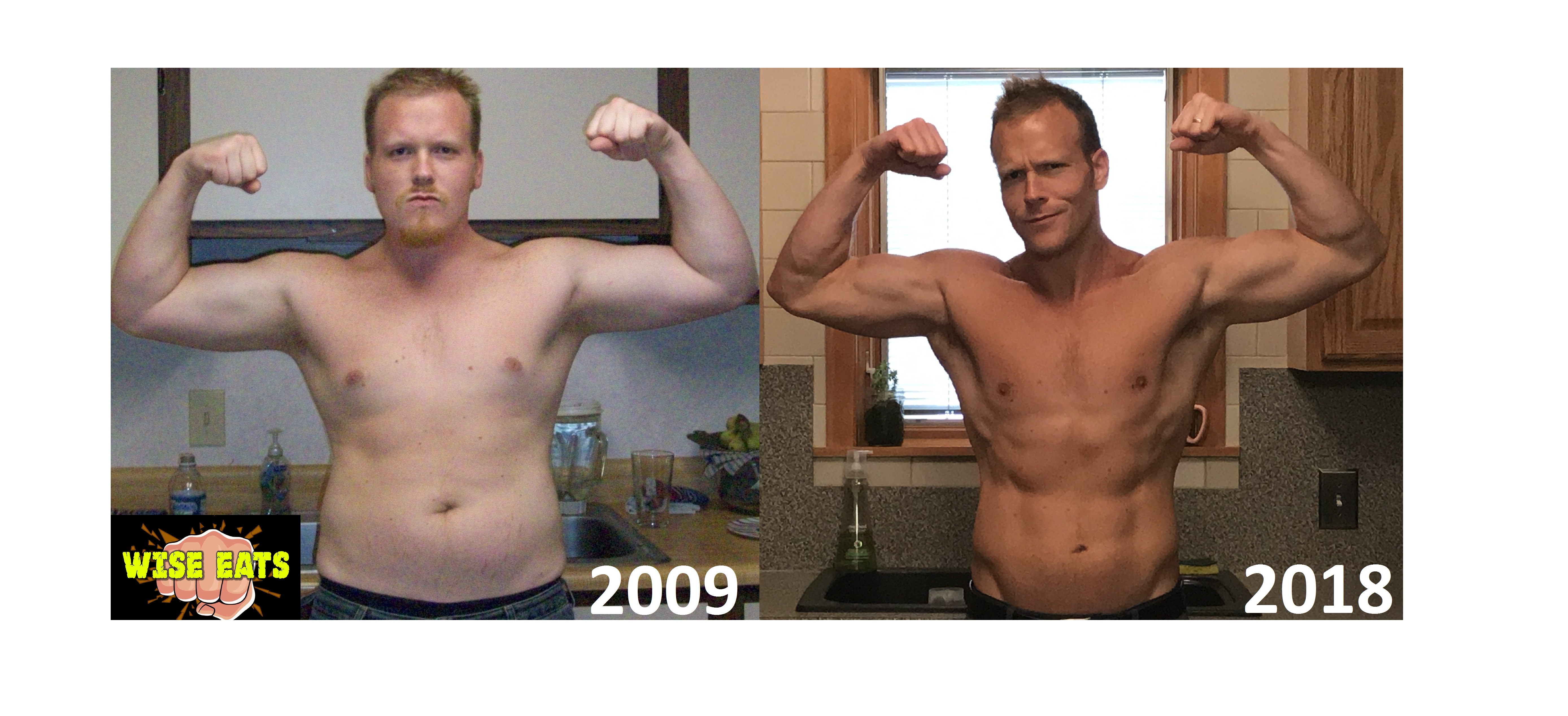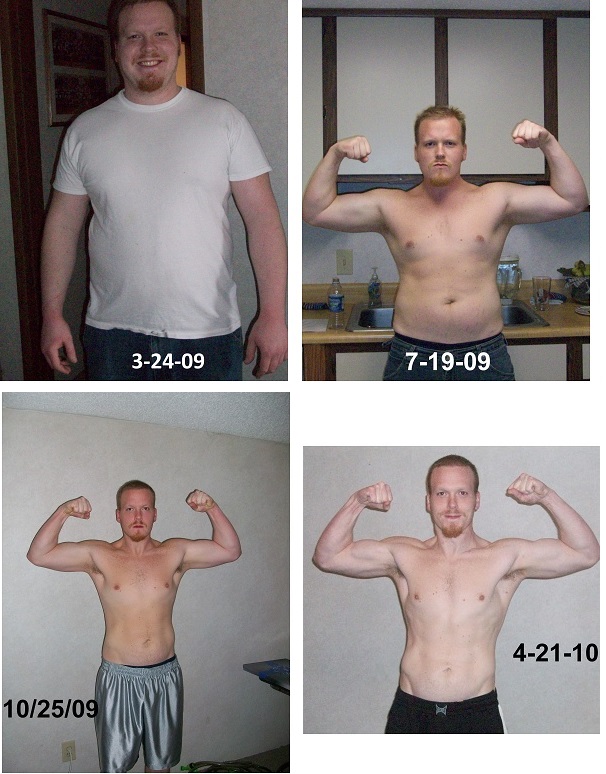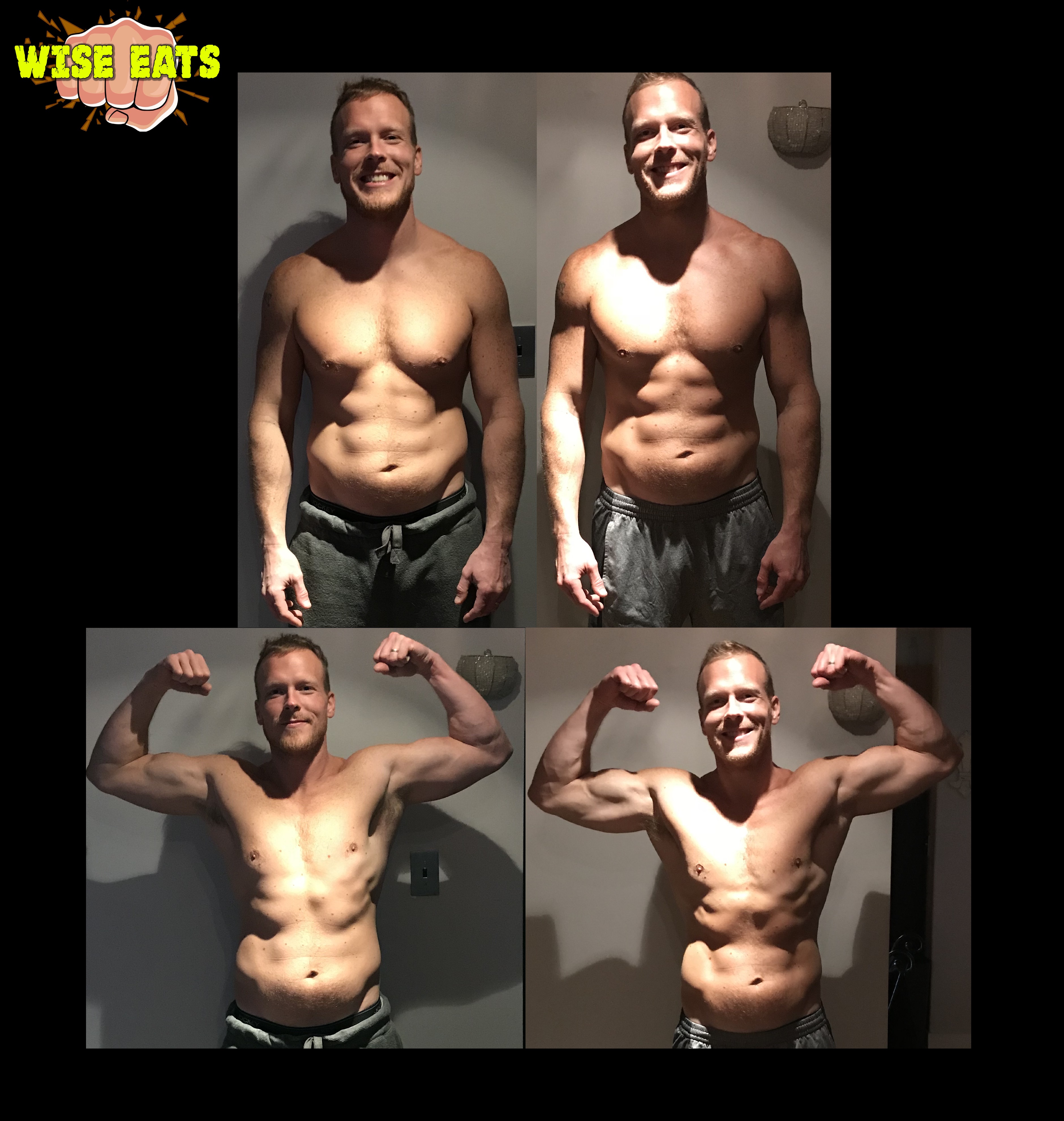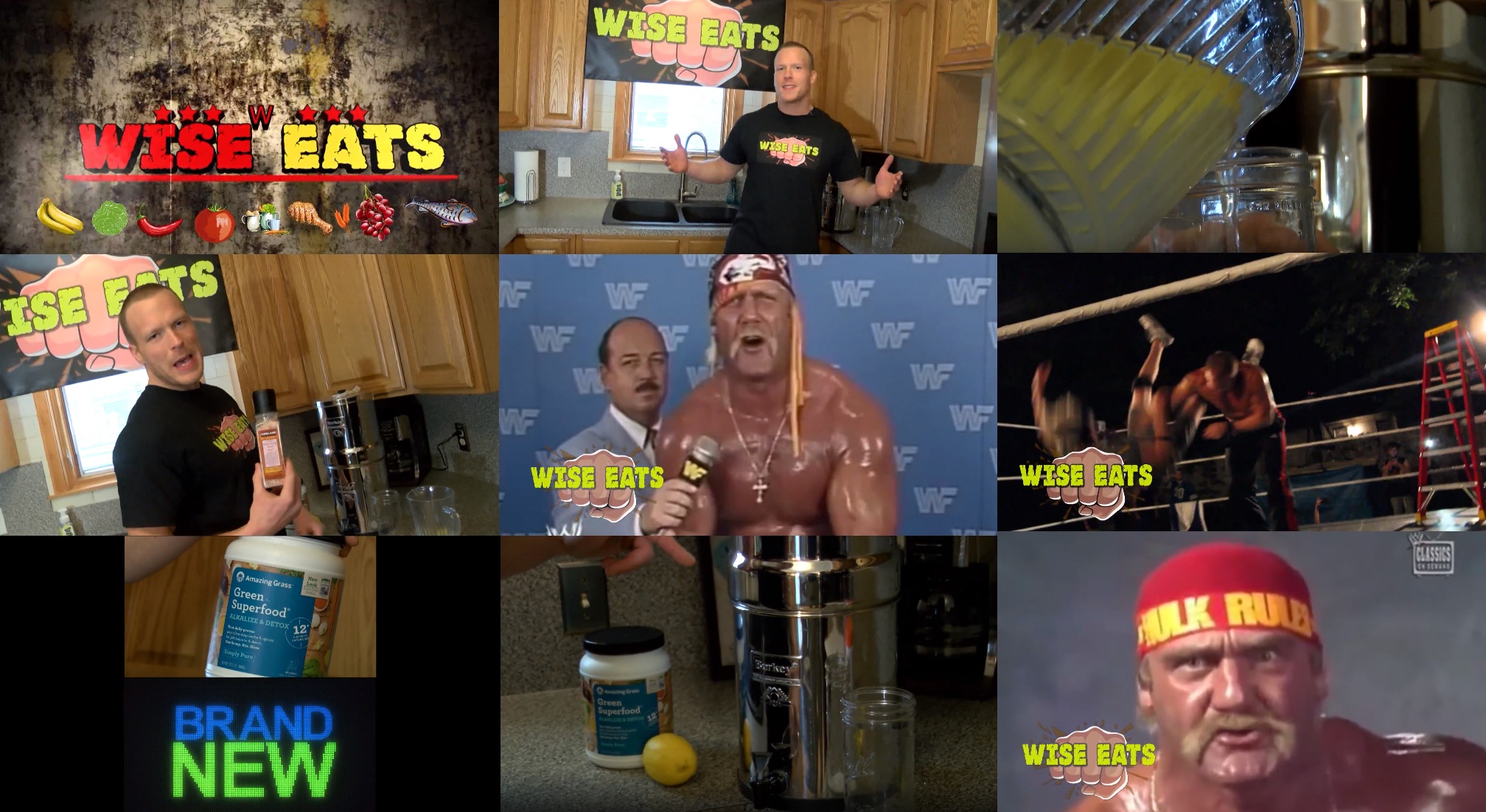If you’ve been to Wise-Eats.com/MyStory, you know that I lost 90lbs back in 2009. It was the start of a major lifestyle change in which I became passionate about nutrition, fitness, building lean muscle, preventing sickness, and optimizing energy levels. Today, I want to share the biggest lessons and tips from that initial weight loss experience, and how you can apply them to your own fat loss goals:
1) Embrace Your Need for Change.
In order to improve your health, you must want it for yourself. Think of the reasons you want to lose weight or build muscle. Don’t let weight loss be some idea that’s out there floating in space. Make it tangible. Will losing 20lbs help you interact better with your kids, make you a better worker, leader, friend, or family member? Think of the reasons you want to change and it will help you solidify that goal. Making the commitment is the first step
2) Set A Specific Fitness Goal.
At 6ft, 270lbs, my original goal was very simple: lose weight. After the weight loss, my goals changed. I was skinny, but still sick and unhealthy. At that point, my goal turned toward body composition and building lean muscle. Assess your current physical condition and figure out exactly where you want to go. Then, make it a goal to finally get there, no matter what!
3) Losing Body Fat Is A Numbers Game.
Calories in, calories out. Assuming you have no pre-existing health conditions or metabolic deficiencies, weight loss is very simple. You need to achieve a caloric deficit in order to lose body fat. A calorie surplus is needed to sustain or grow muscle over time. Use a 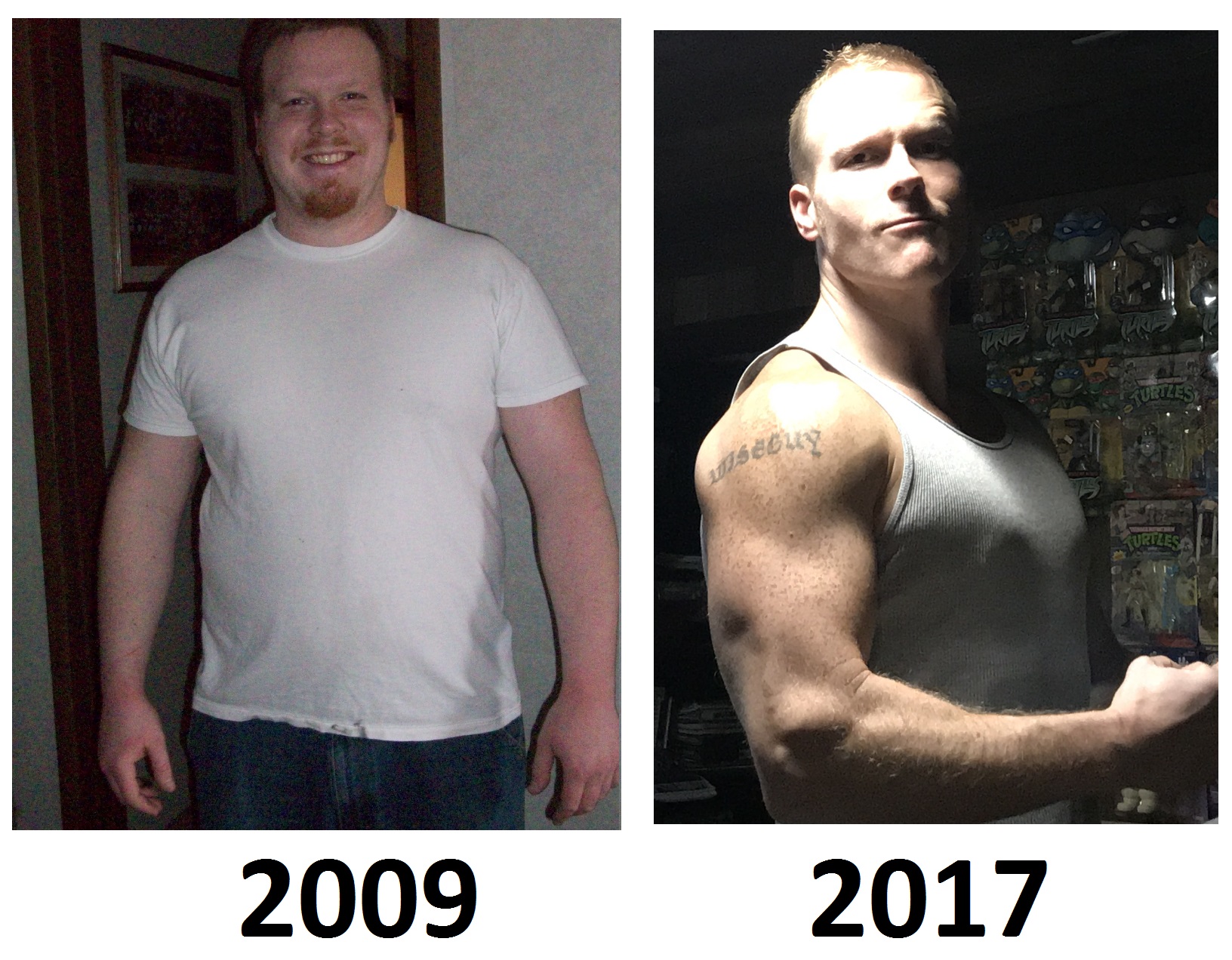 calorie/macronutrient calculator to find out what your daily needs are. I’ve provided my favorite below. Remember, these are just approximations. At 6ft, 200lbs with an active lifestyle, here’s what my caloric needs look like:
calorie/macronutrient calculator to find out what your daily needs are. I’ve provided my favorite below. Remember, these are just approximations. At 6ft, 200lbs with an active lifestyle, here’s what my caloric needs look like:
Maintain Weight: 2,925 calories per day
Gain Weight: 3,510 calories per day
Lose Fat/Sustain Muscle: 2,632 calories per day
Lose Fat: 2,340 calories per day
https://healthyeater.com/flexible-dieting-calculator
I prefer to lose fat while sustaining as much muscle as possible. Eating too few calories will burn up valuable muscle, which slows your metabolism and hinders long-term progress. Weight loss of about 1lb per week is a sustainable pace that will help ensure long-term results. As long as you’re eating slightly less calories than required, you will lose weight. If you’re lifting weights with proper form, making progressions, and eating slightly more than you’re expending, you will gain muscle. It’s that simple.
4) Start A Diet Journal and Count Calories
This step can be as complicated or simple as you make it. Use an app on your phone, track on a spreadsheet, or write longhand like I used to back in the day. This will help you monitor calorie intake, stay accountable, and wise you up toward the foods you’re currently eating. A kitchen scale will help you measure portion sizes. Counting total daily calories is a great place to start.
When it comes to macronutrients (protein, fat, and carbohydrates), there’s no need to obsess over counting every gram, although it helps when you want to accelerate fat loss and build muscle. I could’ve achieved my current level of fitness much faster if I had been more strategic with my eating and drinking habits over the years. The more disciplined you are with your diet, the faster your results will come.
A good rule of thumb is to make sure you’re getting high quality protein with every meal (usually 30-50g per meal). This will ensure healthy weight loss while preserving lean muscle. Add a moderate amount of healthy dietary fat (which, in my experience, is very easy to go overboard on). The rest of your meals should consist of high quality carbohydrates, which will fuel athletic performance and boost physical and mental energy levels.
Instantly receive a full list of recommended protein, fats, and carbohydrates via e-mail when you subscribe to Wise Choice Nation! http://www.wisechoicenation.com/
5) Get Educated About Diet and Exercise.
Do some research about the things you’re putting in your body. Every single thing you eat or drink is either fueling progress or hindering it. Give your body the raw materials it needs to repair and grow efficiently, and you will reap the benefits.
When it comes to exercise, form and safety are paramount. Study proper form through trusted sites like Bodybuilding.com. There are quality videos for literally any exercise you can imagine. Once you understand how to perform compound movements properly and get some confidence doing them, you can get consistent with your training program and make steady progress.
6) Get Moving.
Discover forms of exercise that you enjoy and will perform on a regular basis. You can workout at home, work, or a local gym. Hire a personal trainer, join a fitness class, or just get outside and go for a walk or run or bike ride. You don’t have to buy expensive equipment or spend hours wasting away on a treadmill. A dumbbell and a YouTube video are all you need to get started. My favorite workout regimens, past and present, will be available soon at Wise-Eats.com/Workouts. Currently, I enjoy weight lifting 5-6 days per week mixed with some high intensity interval training 1-3 days per week (usually performed with kettlebells or UFC Fit full-body dumbbell/bodyweight training). Once you find an exercise program that you’re passionate about, working out is never a chore. It becomes part of your routine; something you can’t function without. You show up because you’re motivated to get better every single time and know that you won’t function at your best without it. Feeling amazing becomes the norm; getting in shape is just a byproduct.
Use a fitness journal to record exercises and weights. Monitor your bodyweight daily and/or week-to-week. When tracking your weight, don’t be disappointed if your results aren’t immediate or consistent. For weight loss, aim to lose 1-2 pounds per week. For muscle gain, look to make progress over time by making small improvements each workout. Slightly more weight each time or more reps with good form. Record your performance, reflect on your progress, and celebrate your accomplishments. Realize that it’s a marathon, not a sprint. If you stay consistent, you will see results.
8) Eat Real Food.
Total calorie intake and macros are important to fitness, but I believe nutrient quality is even more important to overall health. Replace fast food or processed convenience foods with home prepared meals from fresh ingredients. Pay attention to nutrition fact labels, and try to eat minimally processed, organic 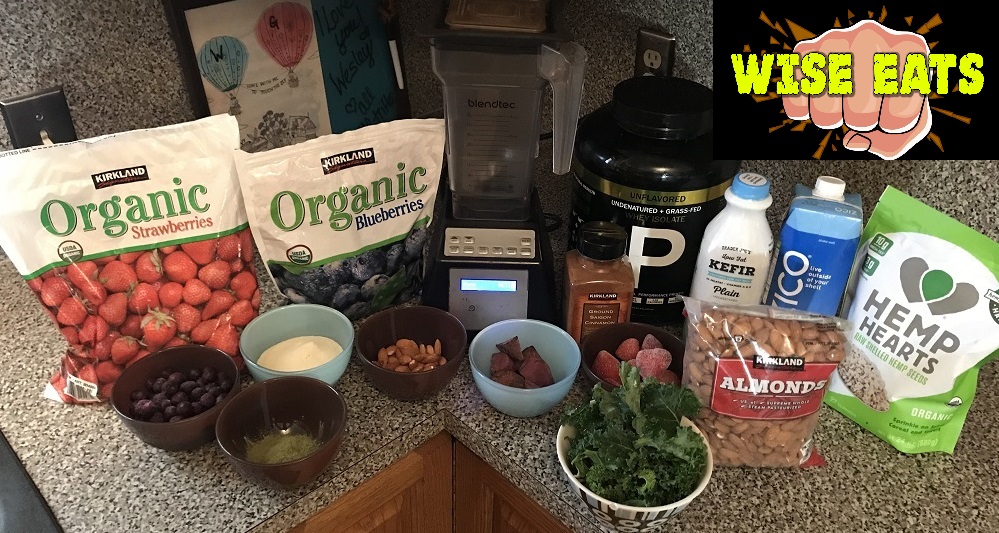 foods as often as possible. Lean proteins like chicken, fish, and whey protein powder. Nutrient-rich carbs like oat bran, quinoa, and sweet potato. Fresh fruits and vegetables as close to their original source as you can get them. Meats that are organic or sustainably raised. Food has tremendous power over your health and fitness, so take it seriously. It can make or break your motivation, consistency, and progress.
foods as often as possible. Lean proteins like chicken, fish, and whey protein powder. Nutrient-rich carbs like oat bran, quinoa, and sweet potato. Fresh fruits and vegetables as close to their original source as you can get them. Meats that are organic or sustainably raised. Food has tremendous power over your health and fitness, so take it seriously. It can make or break your motivation, consistency, and progress.
9) Drink Only Water.
Okay, this is a bit of an exaggeration. Tea, coffee, coconut water, rice milk, and almond milk are also acceptable beverages, but you get the idea. The bottom line is to eliminate pop, juice, energy drinks, and most other processed beverages. They’re usually science-based chemical concoctions that are going to lead to imbalances and long-term health complications. I used to drink 20oz or more of soda per day for most my life, so I get it. Quitting that was one of the hardest mental struggles I’ve ever overcome. Trust me, once you finally eliminate soda  from your diet, you’ll wonder why you ever drank it in the first place.
from your diet, you’ll wonder why you ever drank it in the first place.
A complete list of Wise Eats approved foods, beverages, and supplements are sent instantly via e-mail when you subscribe FREE to Wise Choice Nation! http://www.wisechoicenation.com/
10) Limit Yourself to One Cheat Meal Per Week Or Less.
Throughout my 90lb weight loss, I cheated on my diet a ton. Cheat meals, cheat days, even full cheat weeks. Calorie restriction sustained my weight loss, not consistent healthy eating. Over time, however, I was able to improve my diet and focus on eating clean, which helped me build muscle and start to get really fit. You don’t have to eat perfect all of the time to lose weight and get in shape. Focus on your goals, try to eat healthy the majority of the time, treat yourself in moderation, and always get back on track after a cheat meal.
11) Plan Meals in Advance.
It’s time to get in the kitchen. Remove processed junk foods and other unhealthy snacks from your kitchen. If it’s not in your house, you can’t eat it, so stock your cabinets with wise choices. Make large batches of food to have ready for quick, convenient, well-balanced meals. Make enough breakfast to have leftovers for days. Bring healthy snacks like nuts and fresh fruit to have on hand at work. Prepare shaker bottles full of protein for those moments when you’re stuck needing a meal. The more you prepare, the greater your chances for success. Stay away from vending machines and restaurants. You possess sole responsibility for every single thing you put into your body. Own that role and do good things for yourself.
12) Kick Your Bad Habits to Make Room for Good Ones.
Quit smoking and take more deep breaths. Replace soda with filtered lemon water. Less sitting, more walking. Pack a healthy lunch instead of buying fast food. Stop feeling tired and sick. Start feeling energized and upbeat. Less negativity, more compassion and kindness. Watch less TV, read more books. Look at your cell phone less, sleep a little more. Reduce processed snacks, eat more vegetables. Replace negative thoughts with positive ones. Focus less on your problems and more on things you’re grateful for. Small changes today add up to life-altering results in the future.
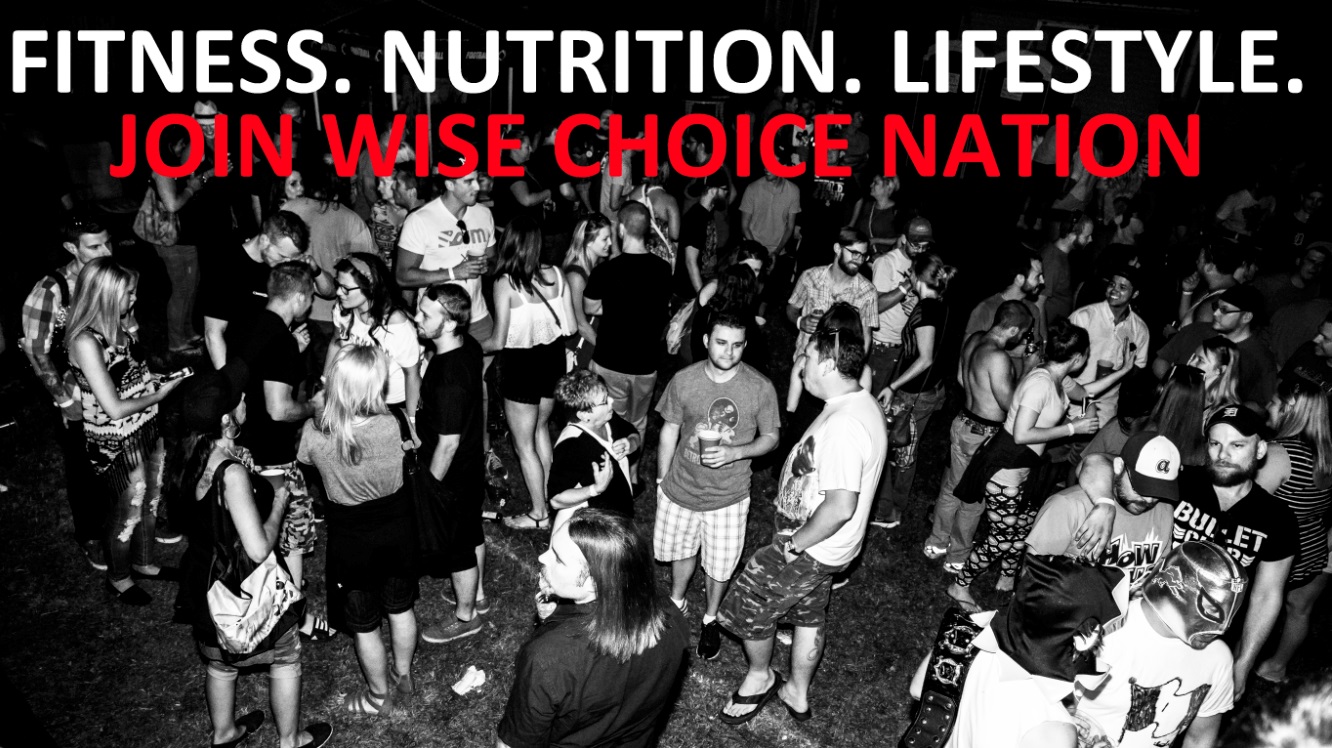
Develop a lifestyle that will eliminate body fat, build muscle, and optimize your life for good. Do it for yourself, but also do it because there is someone out there who needs you to be around for a long time. Avoid sickness, boost your mood, increase energy levels, and fight depression with a longevity-based lifestyle. Through proper diet and exercise you can improve your mental capacity, productivity levels, and motivation to get better in other areas of life. Stick with Wise-Eats.com to help get you there, and feel free to send any questions you may have along the way. To keep up on the latest updates, articles, recipes and more, join our free newsletter, Wise Choice Nation. Thanks for reading. Make Wise Choices!
